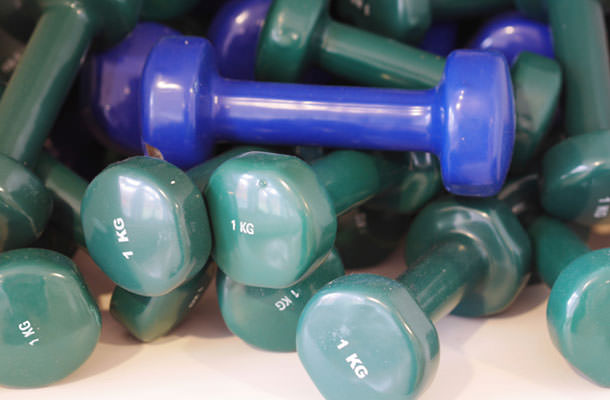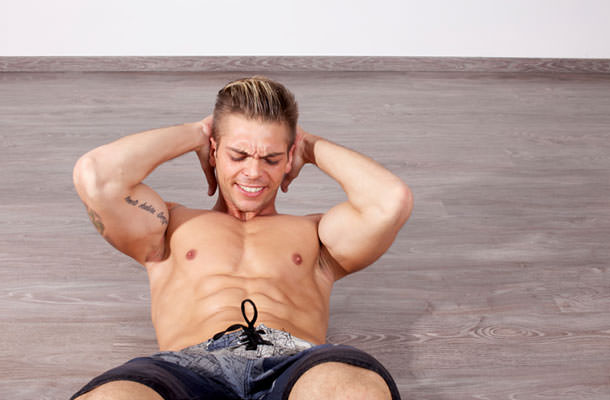Ten Pointless Gym Workouts
When you sign up for a gym membership, you take a positive step towards improving your health and fitness. Signing up, though, is only a first step. To actually benefit from the membership, you need to work out. However, not all workouts are equally effective.
To get the most benefits from your time in the gym, you should do exercises that help you reach your fitness goals in a safe and effective manner.
That means doing 75 minutes of vigorous or 150 minutes of moderate cardio and two strength-training sessions every week, choosing activities that give you the safest and most effective workout for your time and avoiding ones that either offer minimal benefits or have high potential risk of injury.
1. Electronic Muscle Stimulation

Late night infomercials promise that all you need for rock-hard abs is to lie back and let an electronic muscle stimulator do all your work for you.If this sounds just too good to be true, it is.
Electronic muscle stimulators are medical devices intended to prevent muscle atrophy in bed-ridden, severely injured, post-surgical or paralyzed patients.
They will not improve muscle tone in a healthy person, and can be dangerous, causing shocks or burns, if not used under the supervision of a qualified health care professional.
2. Vibration Belts and Machines

The idea of standing still and having a machine shake or jiggle away your fat would be really appealing, if it worked. If you enjoy the sensation, especially after a long day of sitting in one position at a desk, it’s harmless, but if you want to lose weight or fat, you need to do the work yourself.
You will not lose fat from an area just by having a machine or masseuse shake or manipulate it. To tone muscles, you need to work those muscles against resistance.
3. Spot Reduction

Every exerciser has a least-favorite trouble spot. Few men love their love handles or beer bellies. For women, the problem spots are often below the waist, including saddlebags and thunder thighs. You may be tempted to spend your gym time doing hundreds of repetitions of exercises designed to spot-reduce these problem areas.Unfortunately, that does not work. The only way to lose fat in a specific area is to lose overall body fat.
The specific order in which your body uses fat stores is determined by your age, gender and genetic predisposition.If you combine a healthy diet with a balanced exercise program, you will eventually lose fat from all areas of your body, but focusing all your gym time on one or two body parts will actually result in less overall fat loss than a more balanced program.
4. Using Too Little Weight

For all forms of strength training, you should aim for a weight or resistance that enables you to do a set of eight to twelve repetitions of an exercise. If you can do more than 15 repetitions, you are not lifting enough weight to strengthen your muscles.
Skip the cute, five-pound pink dumbbells, and lift real weights. Women should not worry about bulking up like professional male body builders; that requires the male hormone testosterone and years of intense training.
5. Low-Intensity Cardio

Aerobic, or cardiovascular, exercise, in which you work out at moderate intensity for a period of at least fifteen minutes is good for your heart, weight, blood pressure, lungs and circulation.
If you work out at very high intensity, you may not be able to finish a long enough workout to benefit, but if you do not work out hard enough, you will not improve your aerobic fitness.
Many cardio machines have heart rate monitors that allow you to adjust your workout intensity to stay in the aerobic zone of 60 to 85 percent of your predicted, age-adjusted heart rate.
Another way to gauge intensity is that you should be able to talk, but not sing and be sweating lightly and breathing a bit faster than normal but not panting or gasping for breath.
6. Behind-the-Neck Pull-ups or Pull-downs

Whether you do traditional pull-ups or chin-ups or lat pull-downs on a high pulley, you are building up the muscles of your back, shoulders and upper arms, especially the latissimus dori in your back and the biceps.
Done correctly, with the bar ending in front of your chest, this is an important and effective exercise. When you spread your hands farther than shoulder width apart or end with the bar behind your neck, you are actually getting less of a workout and risking injury to the ligaments in your shoulders.
7. Smith Machine Squats

Doing squats with heavy barbells, especially without a spotter, can be dangerous. The Smith machine, in which the bar slides up and down a track, appears safer, because you can adjust the machine to stop the bar if you cannot complete a lift.
Actually, though, the unnatural movement of the weight and awkward positioning can injure your back.If you do not feel comfortable doing regular barbell squats with a spotter, try dumbbell squats or a leg press machine.Whatever form of squats or leg presses you do, never bend your legs more than 90 degrees to avoid stressing your knee joints.
8. Behind-the-Neck Military Press

The overhead or military press, whether done with dumbbells or a machine, works your shoulder and triceps muscles. Whether the exercise is safe and effective depends on how you position the weights.
You should start with the weights or bar just in front of your shoulders, and lift straight up so that you end with the weights above your head, and your elbows slightly in front of your ears.
If the weights are too far forward, you end up working chest rather than shoulder muscles, but if the weights or bar end begin or end behind your neck or head, you risk injuring your shoulder muscles.
9. Ineffective Abdominals

The most effective abdominal exercises, according to a study sponsored by the American Council on Exercise, are the bicycle maneuver, bent-leg captain’s chair leg raises, and exercise ball crunches and reverse crunches. Avoid abdominal rockers, traditional crunches and abdominal rollers.
10. Leg Extension Machines

Leg extension machines are designed to isolate the quadriceps muscles. Unfortunately, they are neither safe nor good uses of gym time. Leg extensions place excessive strain on your knee joint, and because they use only one muscle group are not as effective a use of your time as squats, leg presses, or lunges which work multiple muscles in safer positions.












